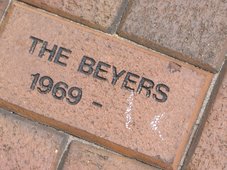Friday, October 17, 2008
Does Anyone Else Have An Opinion?
That's a question that comes to our mind after reading the local papers for the past few weeks. Take this story on the traffic implications of General Growth's downtown plans, the first of what the ExploreHoward blog says will be a four-part series on the "Columbia of Tomorrow."
Who do we hear from? General Growth's traffic consultant, County Councilwoman Courtney Watson, CA Board member Alex Hekimian and State Del. Elizabeth Bobo. Important views, all...but just maybe there are some other voices out there.
We'd love to hear from you.
Who do we hear from? General Growth's traffic consultant, County Councilwoman Courtney Watson, CA Board member Alex Hekimian and State Del. Elizabeth Bobo. Important views, all...but just maybe there are some other voices out there.
We'd love to hear from you.
Subscribe to:
Post Comments (Atom)





2 comments:
CT,
I have been trying to put together a blog post on this myself. One thing that has stood out for me, on a historical basis, has been the unanimous rejection of all traffic studies for downtown Columbia. Clearly some of this data must be correct.
Taken from a different point of view are quotes from Lewis Mumford's book, "The City in History."
"What an effective network requires is the largest number of alternative modes of transportation, at varying speeds and volumes, for different functions and purposes. The fastest way to move 100,000 people within a limited urban area, say a half mile radius, is on foot: the slowest way of moving them would be to put them all into motor cars."
and
"The fact that speed in locomotion should be a function of human purpose. If one wants to meet and chat with people on an urban promenade, three miles an hour will be too fast; if a surgeon is being rushed to a patient a thousand miles away, three hundred miles an hour may be too slow. But what our experts in transportation are kept by their own axioms from realizing is that an adequate transportation system cannot be created in terms of any single limited means of locomotion however fast its theoretic speed."
B.Santos
I posted a comment on the Explore Howard site, but it bears repeating in this conversation as well:
The problem here, as I can see it, is a lack of a long term focus concerning the future of Town Center. While current budgetary restrictions are certainly a factor, it is still no excuse for sloppy planning from any side. Are we building a town center for today's demographics, or the one that will be in place 20 to 30 years from now? What economic trends are we likely to face within that time frame? What will the status of the oil industry be in and what are the likely forms of transportation. How does the automobile fit into the picture down the road? What are the preferred choices of housing of the younger folks of today and of those to come? What can we do today to ensure a truly green infrastructure and not just slap up a modest amount of solar panels to give the impression that we're being "green". If we can't bring in a green or yellow line to Columbia right now, why don't we prepare for that eventuality? What do we need to put in place today to make it easier tomorrow? Should we even encourage cars in the town center area or should we restrict parking to the periphery to encourage people to walk some more. If it's the latter, should it be a loop line or a series of people movers that are largely automated and require little labor on a routine basis? How do we manage truck access for deliveries? These are not exactly new questions, but ones that seem to be out of the popular conversation. I would love to hear some answers in the future.
Post a Comment